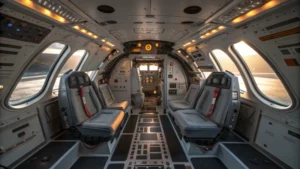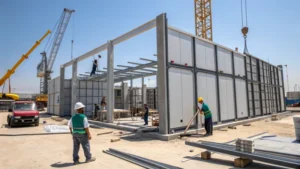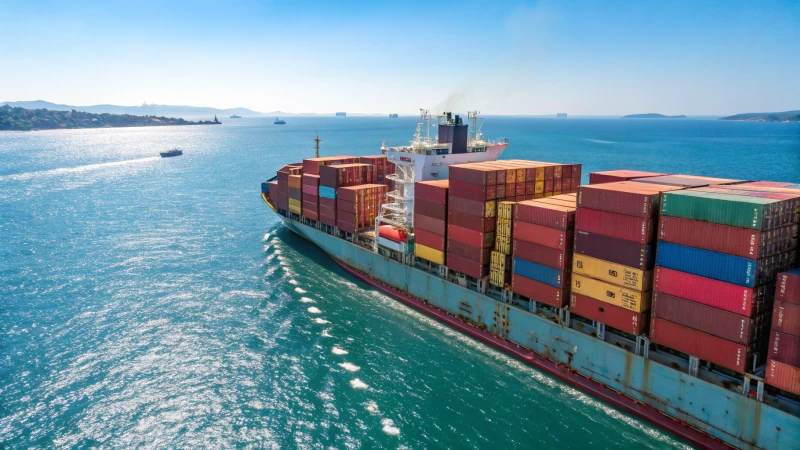
Embarking on the journey of shipping capsule houses from China can feel like navigating a maze, but with the right roadmap, it’s smoother than you think!
To efficiently ship capsule houses from China, I start by choosing a reputable manufacturer, confirming design specifications, selecting the ideal shipping method, and ensuring compliance with customs regulations. These steps help me avoid delays and extra costs, making the entire process much smoother.
When I first started shipping these innovative homes, I quickly realized that each step—from packaging to installation—holds unique challenges. For instance, selecting the right packaging was like choosing armor for battle, ensuring each house arrives intact and ready to impress. Diving deeper into these details was invaluable, as it not only streamlined the process but also helped me anticipate potential hiccups along the way.
Choosing a reputable manufacturer reduces shipping delays.True
A reputable manufacturer ensures quality control and timely production.
Ignoring customs regulations can expedite the shipping process.False
Non-compliance with customs regulations often leads to delays and fines.
What Should You Look for in a Capsule House Manufacturer?
Have you ever tried to piece together a puzzle without knowing if all the pieces fit? That's what choosing the right capsule house manufacturer can feel like.
When selecting a capsule house manufacturer, focus on their experience, customization options, quality control, and international shipping capabilities. Dive into testimonials, past projects, and confirm compliance with relevant standards to ensure a perfect fit for your needs.
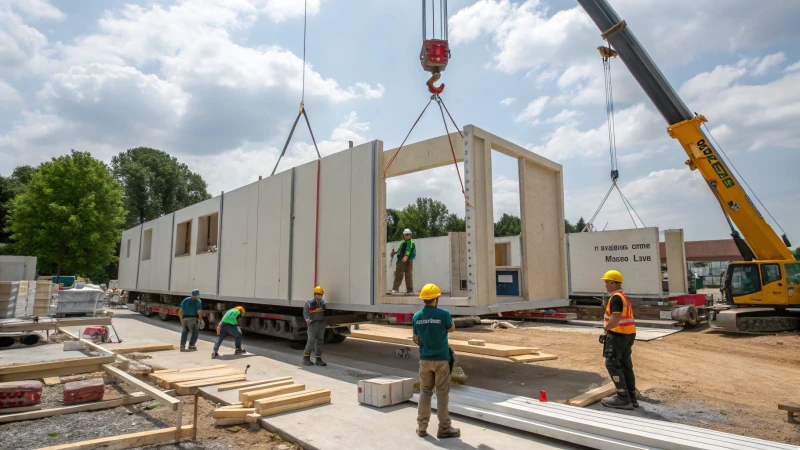
"Modern Capsule House")
Experience and Reputation
Think about the last time you made a significant purchase. Did you check reviews, or maybe even ask a friend for their opinion? When it comes to capsule house manufacturers, diving into their track record1 is just as crucial. I've learned this firsthand—finding a company with years of industry experience and a solid reputation can make all the difference. I remember poring over reviews late into the night, reaching out for testimonials from past clients, just to be sure I was entrusting my investment to someone reliable. It's about peace of mind, knowing your chosen manufacturer has a history of successful projects.
Customization Capabilities
Customization is like the secret sauce that turns an ordinary experience into something unforgettable. When I was looking into capsule houses, I quickly realized how important it was for the product to meet my specific needs. Imagine wanting a quaint little eco-friendly retreat and ending up with something that feels more like a generic hotel room! Ask about design flexibility and whether they can incorporate sustainable materials or unique features. A customized approach2 not only enhances aesthetic appeal but also boosts functionality, making your housing unit truly yours.
| Customization Aspect | Importance |
|---|---|
| Design Flexibility | Personalization |
| Material Options | Sustainability |
| Feature Integration | Functionality |
Quality Control and Standards
Quality is non-negotiable. I’ve had experiences where products didn’t live up to their promises due to poor quality control. Ensure that your manufacturer adheres to international standards like ISO or holds certifications that guarantee product reliability3. It’s these quality control measures that will help reduce risks of defects and ensure the longevity of your structure.
Shipping and Logistics Expertise
Shipping internationally can sometimes feel like sending your prized possession into the unknown. The manufacturer should offer detailed shipping plans, including cost breakdowns and timelines. I once faced delays because of customs issues, which taught me to ensure they have experience dealing with customs regulations4. This kind of expertise can prevent those frustrating hold-ups.
After-Sales Support
It's reassuring to know that even after you've purchased something, the seller still has your back. Comprehensive after-sales support is crucial. This includes help with installation, maintenance, and addressing any post-delivery issues. The first time I installed a modular home, having end-to-end services made the process so much smoother—like having a guide through uncharted territory.
Key Considerations Summary
Choosing the right capsule house manufacturer is much like crafting a unique experience for future guests—every detail matters. With these insights, you'll be well-prepared to make a decision that aligns perfectly with your vision.
Experienced manufacturers offer better product reliability.True
Experience indicates a history of successful projects, suggesting reliability.
Customization options are not important in capsule houses.False
Customization enhances functionality and aesthetic appeal, making it crucial.
How Do Design Specifications Impact Shipping Costs?
Ever wondered why shipping costs sometimes skyrocket? Let's delve into how the design of your product might be the culprit.
Design specifications impact shipping costs by affecting the dimensions, weight, and packaging of products. By optimizing these elements, you can lower freight charges and enhance logistical efficiency.
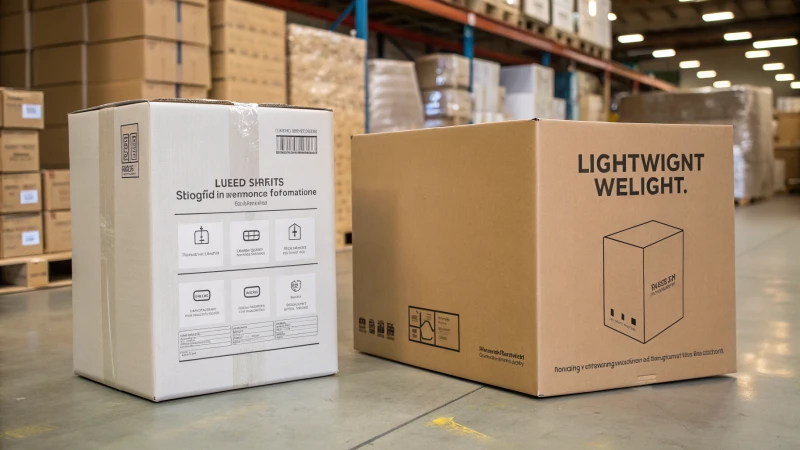
The Role of Dimensions in Shipping Costs
One of the primary factors affecting shipping costs is the dimensions of your product5. Let me share a story from when I first started shipping products internationally. Back then, I was quite naive about how much dimensions could affect shipping costs. One day, I received a hefty bill just because a few extra inches here and there on my product's packaging tipped it over into a higher shipping bracket. Larger or irregularly shaped items may incur higher fees due to the space they occupy. That's when I became a fan of flat-packing techniques.
For instance, by adjusting the product dimensions to fit within standard container sizes, you can significantly cut down on sea freight expenses. A thorough review of your design specifications might reveal opportunities like folding mechanisms or detachable parts to make them more shipping-friendly.
| Design Feature | Impact on Shipping Costs |
|---|---|
| Flat-Packing | Reduces space usage |
| Modular Parts | Allows flexible packaging |
Weight Considerations in Freight Charges
The weight of a product is another crucial element that affects shipping costs. I remember this one time I decided to opt for a sturdier material thinking it would enhance my product's durability. Little did I know that it would also make it heavier, leading to increased air freight charges! Heavier items generally cost more to ship, especially via air freight, which charges based on both weight and volume.
By selecting lightweight materials or reassessing structural components, you might be able to lower these expenses. Plus, choosing sustainable materials not only contributes to eco-friendly goals but often results in lighter products. That’s a double win—good for the planet and good for your wallet.
Packaging Choices and Protection
When it comes to packaging, I've learned the hard way that the right materials make all the difference. Proper packaging is essential for safeguarding goods during transit but also impacts shipping costs. On one occasion, a shipment arrived with damages due to inadequate packaging, leading to unhappy customers and extra costs.
Choosing protective yet lightweight materials can strike a balance between safety and cost-effectiveness. Partnering with manufacturers who offer customizable packaging solutions can further streamline logistics.
| Packaging Aspect | Potential Benefit |
|---|---|
| Recyclable Material | Cost savings & eco-friendly |
| Custom Solutions | Tailored protection |
Transport Method Selection
Finally, choosing the right transport method was something I underestimated until I had to ship a large batch overseas. Sea freight is usually more economical for bulk shipments, whereas air freight is ideal for smaller or urgent deliveries.
Understanding how different design choices align with various shipping methods can help you select the most cost-effective option. For example, modular designs that fit standard containers are perfect for sea freight while compact items benefit from air transport efficiencies.
By evaluating how each design element impacts shipping options6, you can make informed decisions to optimize logistics and manage expenses effectively.
Flat-packing reduces shipping costs by minimizing space usage.True
Flat-packing optimizes space, lowering shipping costs by reducing volume.
Heavier products are cheaper to ship via air freight.False
Air freight charges based on weight and volume, making heavy items costly.
Which Shipping Method is Best for Your Capsule House?
Shipping a capsule house isn't just about logistics—it's about making dreams a reality. Let's delve into the best methods to ensure your house arrives safely and efficiently.
The best shipping method for your capsule house hinges on its size, urgency, and destination. For larger structures, container shipping is cost-effective, while air freight is ideal for urgent, smaller deliveries.
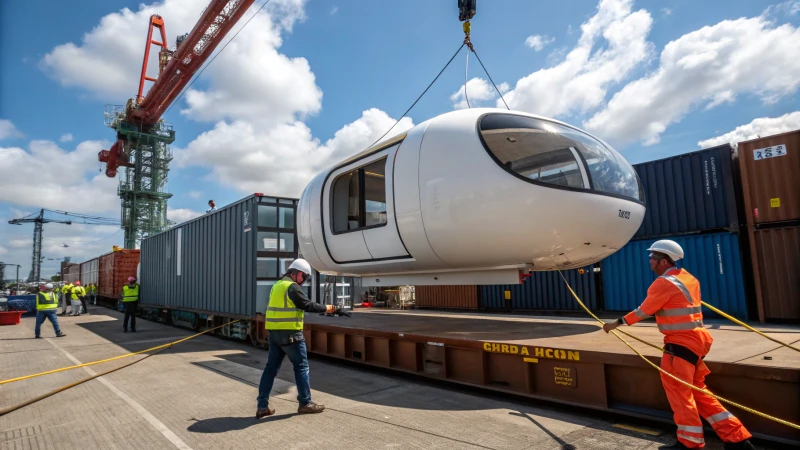
Understanding Different Shipping Methods
When I first explored shipping options for a capsule house7, it felt like navigating a maze. I knew the choice would impact not only my wallet but also the integrity of the structure. It was crucial to find the right balance between cost and care.
| Shipping Method | Advantages | Disadvantages |
|---|---|---|
| Container (Sea) | Cost-effective, suitable for large structures | Longer transit time, limited by port availability |
| Air Freight | Fast delivery, ideal for urgent needs | High cost, size and weight limitations |
| Land Transport | Flexible routes, suitable for regional delivery | Limited to certain regions, potential delays |
Factors to Consider
-
Size and Weight
From my experience, if your capsule house is anything like mine—a bit on the larger side—container shipping8 is often the way to go. It offers a budget-friendly approach by allowing disassembly and efficient packing.
-
Urgency
When time is tight, air freight9 might be your best bet. I once had a tight deadline for a project, and despite the higher cost, air freight ensured I met it without breaking a sweat.
-
Destination and Regulations
For local deliveries, land transport can be a lifesaver—just be sure the infrastructure can handle it. Understanding local regulations10 is key to avoid surprises at the border.
Additional Considerations
- Budget Constraints: I've learned that it's wise to compare your budget against each method's costs before committing.
- Insurance Needs: Don't skimp on insurance; it’s your safety net in case of mishaps during transit.
By carefully weighing these factors, you can choose a shipping method that aligns with both your logistical needs and financial goals. It's always helpful to get insights from a freight forwarder11, as their expertise can guide you in making the best decision for your situation.
Container shipping is the fastest method for capsule houses.False
Container shipping is cost-effective but not the fastest; air freight is faster.
Air freight is ideal for urgent capsule house deliveries.True
Air freight offers quick delivery, suitable for time-sensitive shipments.
How Can You Ensure Compliance with Customs Regulations?
Navigating the maze of customs regulations might seem like a challenge, but mastering them is essential for smooth international trade.
To ensure compliance with customs regulations, I need to thoroughly understand import/export laws, maintain accurate documentation, engage experienced customs brokers, and stay informed about regulatory changes. These practices help minimize delays and penalties, ensuring that my goods cross borders smoothly.
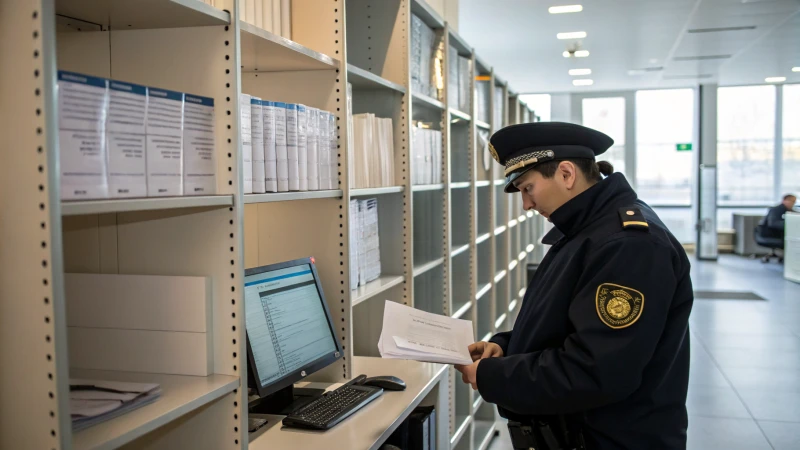
Understanding Customs Regulations
Customs regulations can feel like a complex web, each country weaving its own intricate pattern. I remember when I first started trading internationally; it was like learning a new language. Every country I dealt with had its own set of rules and expectations. But, just like learning a language, the more I practiced and researched, the more fluent I became. I made it a habit to dive deep into the specific requirements for each nation I traded with, especially concerning tariff classifications and import duties. I've found customs databases12 to be invaluable in keeping me updated on any legal shifts.
Accurate Documentation
I learned early on that accurate documentation is my lifeline in international shipping. Imagine sending off a shipment only to have it held up over a misplaced comma or an incorrect number—frustrating, right? That happened to me once, and it was enough to make me meticulous about paperwork. I now triple-check every invoice and packing list and maintain a checklist to ensure all documents are shipshape before sending anything out.
| Document Type | Description |
|---|---|
| Commercial Invoice | Details the transaction between buyer and seller |
| Bill of Lading | Contract between shipper and carrier outlining terms of shipment |
| Certificate of Origin | Proof of the origin of goods for tariff purposes |
Engaging a Customs Broker
When customs regulations become too convoluted, having a reliable customs broker feels like having a wise guide through a dense forest. The right broker handles all the complex paperwork and ensures that I'm adhering to all necessary regulations. It's crucial for me to choose someone well-versed in my industry and familiar with the countries I'm trading with.
Regular Training and Audits
I can’t stress enough the importance of regular training for my team to keep up with the latest customs rules and best practices. It’s like keeping everyone on the same page in a constantly changing book. Regular audits also help me assess our compliance levels and pinpoint areas needing improvement. Audit tools13 are fantastic for this.
Staying Informed About Regulatory Changes
Customs regulations are like shifting sands; they change often and without warning. To stay ahead, I subscribe to industry newsletters and am active in trade associations that keep me updated on these changes. Implementing regulatory monitoring systems14 has been a game-changer for ensuring my team is always informed and ready.
By weaving these strategies into my operations, I’ve enhanced my customs compliance efforts, reducing risks of delays and penalties while fostering smoother international trade operations.
Leveraging Technology
Technology is my silent partner in ensuring compliance. I use automated compliance software15 to efficiently manage documentation and deadlines. These systems integrate seamlessly with my existing ERP solutions, offering real-time insights into the compliance status of shipments.
By investing in these resources, I ensure that my business remains agile and responsive to regulatory demands, safeguarding my international trade operations from unnecessary setbacks.
Customs regulations are the same worldwide.False
Customs regulations vary significantly between countries, requiring specific research.
Accurate documentation prevents penalties in shipping.True
Complete and precise paperwork is crucial to avoid severe penalties in shipping.
Conclusion
Efficiently shipping capsule houses from China involves selecting a reputable manufacturer, confirming design specifications, choosing the right shipping method, and ensuring compliance with customs regulations to avoid delays.
-
Discover how the manufacturer's past performance can indicate reliability and quality. ↩
-
Learn about various customization possibilities to enhance your capsule house. ↩
-
Understand the importance of quality control standards in ensuring product reliability. ↩
-
Find out how to navigate customs regulations for smooth international shipping. ↩
-
Understanding dimensional impact can help reduce shipping fees by optimizing product size. ↩
-
Exploring this link offers insights into how design choices align with cost-effective shipping methods. ↩
-
Learn about the unique design and benefits of capsule houses to understand why they require specialized shipping methods. ↩
-
Discover why container shipping is preferred for larger structures and how it can save costs on international deliveries. ↩
-
Explore how air freight ensures rapid delivery for time-sensitive shipments despite its higher costs. ↩
-
Understand how local laws and regulations can impact the transportation of your capsule house. ↩
-
Freight forwarders can streamline the shipping process with their expertise in logistics and regulations. ↩
-
Customs databases provide up-to-date information on tariffs and regulations, helping businesses comply with international trade laws. ↩
-
Audit tools help identify compliance gaps and ensure adherence to customs regulations, reducing the risk of penalties. ↩
-
Regulatory monitoring systems track changes in customs laws, ensuring your business stays compliant with evolving regulations. ↩
-
Automated compliance software streamlines document management and regulatory updates, enhancing efficiency in trade operations. ↩





